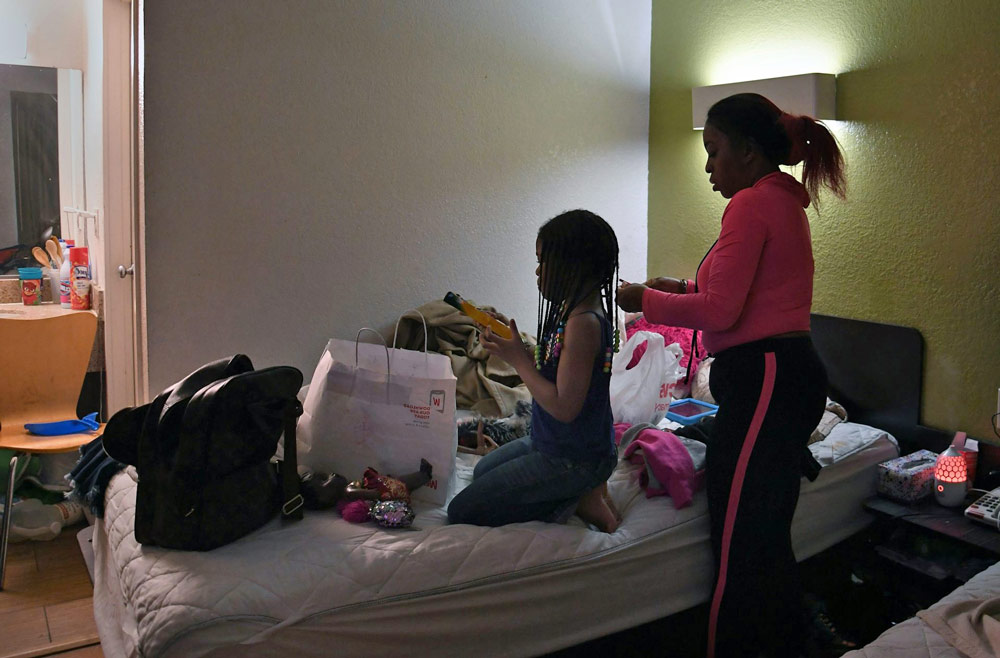By Kirk McClure and Alex Schwartz
Politicians and activists from all sides of the political spectrum in the United States agree that rents are excessively expensive.
Many experts think that the lack of available housing, which is mostly the result of tight rules, is what is causing this catastrophe.
The idea argues that if regulations like minimum lot and house sizes and bans on apartment complexes were loosened, rents and home values would decrease. Consequently, this would facilitate the construction of additional dwellings.
As specialists in housing policy, we are worried about the affordability of housing.However, our analysis finds no link between housing shortages and issues with rental affordability. Rents would probably remain out of reach for many households, so even a major influx of new housing would not reduce housing costs enough to address the situation.
Subsidies are already in place, though, to guarantee that some American renters pay no more than 30% of their income for housing. We believe that expanding the availability of these subsidies is the best course of action.
A financial sinkhole
How much does it cost to rent in the United States?
A household is considered cost-burdened if housing costs exceed thirty percent of its income, according to the U.S. Department of Housing and Urban Development. It is deemed to be heavily burdened if it spends more than 50%. Of all renters, 54% spent over 30% of their pre-tax income on housing in 2023. From 43% of renters in 1999, that number has increased. In 2023, 28% of all renters said that housing accounted for more than half of their income.
Low-income renters are particularly unlikely to be able to pay for their housing: Sixty percent of renters with incomes under $30,000 spent more than half of their income on housing, and eight out of ten spent more than thirty percent.
Depending on the analytical method and time period used, estimates of the country’s housing shortfall might range from one to twenty million units. However, our analysis of the housing stock’s increase between 2000 and the present shows no signs of a general housing shortage. More affluent renters do not experience this scarcity; instead, we observe a discrepancy between the number of low-income households and the amount of affordable housing units accessible to them. This holds true for almost all large and small metropolitan areas as well as the entire country.
Would a reduction in rent be beneficial? Of course. However, they wouldn’t make everything better.
To test this admittedly improbable hypothesis, we performed a simulation: What if all rents fell by 25%? We discovered that, although not as much as you might imagine, it would lower the number of tenants who are plagued by expenses.
Nearly one-third of all renters would still spend more than 30% of their income on housing even with the cut. Furthermore, wealthy renters—the households with the biggest affordability issues—would benefit far more from rent reductions than would lower-income renters.
While the percentage of comparably burdened renters making less than $15,000 would decrease from 89% to just 80%, the percentage of cost-burdened renters making more than $75,000 would decrease from 16% to 4%. For most tenants making less than $30,000, the cost burden would persist even with a 25% rent decrease.
Vouchers offer more breathing room
In the meanwhile, rental subsidies are a tried-and-true method of lowering the cost of housing.
About 5 million households in the United States received what are known as “deep housing subsidies” in 2024, which cap rent payments at 30% of their income.
Housing Choice Vouchers, which allow individuals to rent homes in the private market; public housing; and project-based rental assistance, where the federal government subsidizes the rents for all or some of the units in properties owned by private and nonprofit organizations, are the three types of these subsidies.
Only 25% of all eligible households are enrolled in these three programs, and their numbers have grown by less than 2% since 2014. Rental assistance is available to households making less than 50% of the median family income in their area. However, not everyone who qualifies can receive housing help, unlike Social Security, Medicare, or food stamps. The amount of money that Congress appropriates each year limits the number of recipients, and this money has never been enough to cover the need.
Expanding rental assistance to all eligible low-income households might significantly advance the government’s efforts to address the challenge of rental affordability. Extending the current Housing Choice Voucher program, generally referred to as Section 8, would be the most apparent choice.
Up to a certain payment level established by each local public housing authority—which may range from 80% to 120% of the HUD-designated fair market rent—the program assists in covering the rent. Units must also meet HUD’s physical quality requirements in order to qualify for the program.
Regretfully, 43% of people who receive vouchers are unable to use them. They can’t find an apartment that fulfills the physical quality criterion, rents for less than the payment standard, or has a landlord who will take vouchers.
In states and locations where it is prohibited for landlords to discriminate against voucher users, renters are more likely to secure homes using vouchers. Voucher applicants have also seen better results from programs that include landlord contact and support as well as housing counseling.
However, it may be more efficient to just provide qualifying households with cash to pay their housing costs rather than implementing the voucher program. This strategy is presently being tested by the Philadelphia Housing Authority.
The theory is that removing the administrative obstacles would make it less likely for landlords to turn away applicants who are getting government assistance. This strategy’s drawback is that it wouldn’t stop landlords from renting out subpar apartments that the voucher program would typically turn down.
Homeowners get subsidies why not renters?
It would be expensive to extend rental assistance to all low-income households that qualify.
According to the impartial research tank Urban Institute, the annual cost would be approximately $128 billion.
But Congress has already spent comparable amounts on housing subsidies. However, they are tax benefits for homeowners rather than low-income renters. Without tax deductions, credits, exclusions, and exemptions, Congress would lose out on billions of dollars in tax revenue every year. We refer to this as tax expenditures. The counterpart of a subsidy payment is a tax that is not collected.
For instance, between 1998 and 2017, the federal government lost an average of $187 billion in revenue annually, after inflation, as a result of mortgage interest deductions, state and local tax deductions, and the exemption of home sale proceeds from capital gains taxes. This was before the tax reforms implemented by the first Trump administration in 2017. These tax expenditures came to a total of $95.4 billion in fiscal year 2025.
Furthermore, higher-income households get the majority of homeowner tax expenditures. For example, homeowners making at least $200,000 in 2024 received more than 70% of all mortgage-interest tax deductions.
Increasing the number of rental subsidies available would have further advantages. In terms of homeless services, it would save the federal, state, and local governments billions of money. Furthermore, the need for further subsidies to finance new affordable housing would decrease if rental subsidies were automatically provided. By ensuring adequate rental income, universal rental assistance would make it easier for builders to secure loans to pay for development expenses.
Naturally, a significant increase in federal spending on low-income rental assistance is at odds with the goals of the Trump administration. It proposes to decrease more than $27 billion in public housing and rental assistance by 44% in the upcoming fiscal year.
However, the rental housing affordability dilemma may be resolved if the government provided rental aid in amounts equal to the tax benefits provided to homeowners.
![]()
Kirk McClure is a professor of urban planning at the University of Kansas, and Alex Schwartz is a professor of urban policy at The New School.







